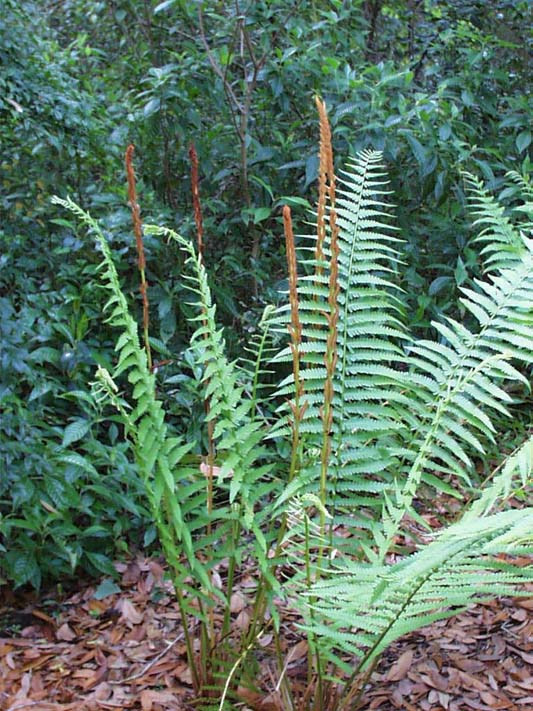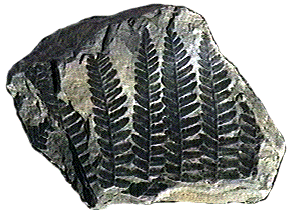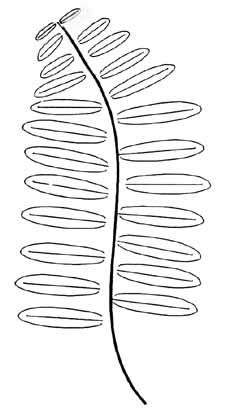A2. FOSSIL FERN
Ferns are familiar, but relatively primitive plants that lack flowers and true seeds. They are among the earliest land plants to appear in the fossil record. Early in their history, ferns were the dominant plants in land-based communities. Many developed thick trunks and grew to great heights. They were the trees of their time. Today, however, ferns are relatively small, bushy plants, commonly found in the understory of temperate and sub-tropical forests. More advanced, flowering plants have replaced them as the dominant plant constituents of most modern terrestrial ecosystems. You have two specimens: a modern fern (Osmunda regalis); and a fossil fern (Neuropteris hirsutus). Neuropteris is Pennsylvanian in age (300 mya).
 |
 |
| Modern fern (Osmunda regalis) | Fossil fern (Neuropteris hirsutus) |

Leaf elements of a typical fern
A2.1 In Osmunda do frondlets on opposite sides of the main frond axis branch off the axis in pairs or alternately?
 |
 |
| branch off the axis in pairs | branch off the axis alternately |
A2.2 Do the frondlets of Neuropteris have the same shape and branching relation as occur in the modern fern?
A2.3 What does your observation imply about the magnitude of evolutionary change in ferns (at least with respect to fronds and frondlets)?
Click here to go back to Fossil Identification
Department of Geology
Brooklyn College
Brooklyn, NY 11210